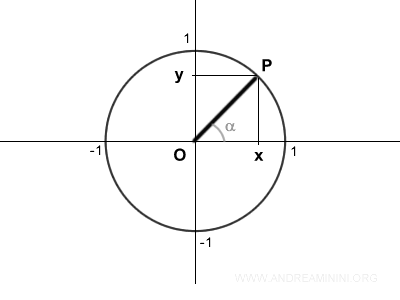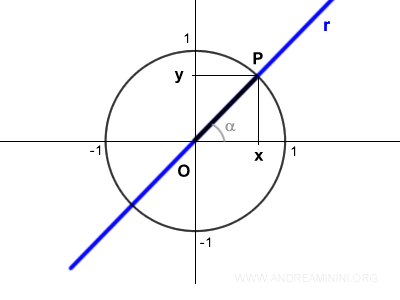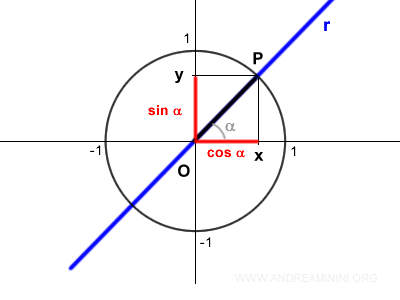Second Fundamental Law of Trigonometry
The tangent of an angle is the ratio of the sine to the cosine of that angle. $$ \tan \alpha = \frac{ \sin \alpha }{ \cos \alpha } $$
Proof
Let's consider an angle alpha on the unit circle.

The segment OP lies on the line r.

The equation of a line passing through the origin is y = mx, where m is the slope, which determines the line's inclination.
$$ y = m \cdot x $$
Now, multiplying both sides of the equation by 1/x isolates the slope:
$$ y \cdot \frac{1}{x} = m \cdot x \cdot \frac{1}{x} $$
After simplifying:
$$ \frac{y}{x} = m $$
We see that the slope (m) of the line r is the ratio y/x.
$$ m = \frac{y}{x} $$
Since the slope of the line is equivalent to the tangent of angle alpha (see this explanation):
$$ m = \frac{y}{x} = \tan \alpha $$
On the unit circle, y corresponds to sin α, and x corresponds to cos α.

Thus, we can express this as:
$$ m = \frac{y}{x} = \frac{\sin \alpha}{ \cos \alpha } = \tan \alpha $$
In this way, we've proven the second fundamental law of trigonometry.
$$ \frac{\sin \alpha}{ \cos \alpha } = \tan \alpha $$
And that's the result.
